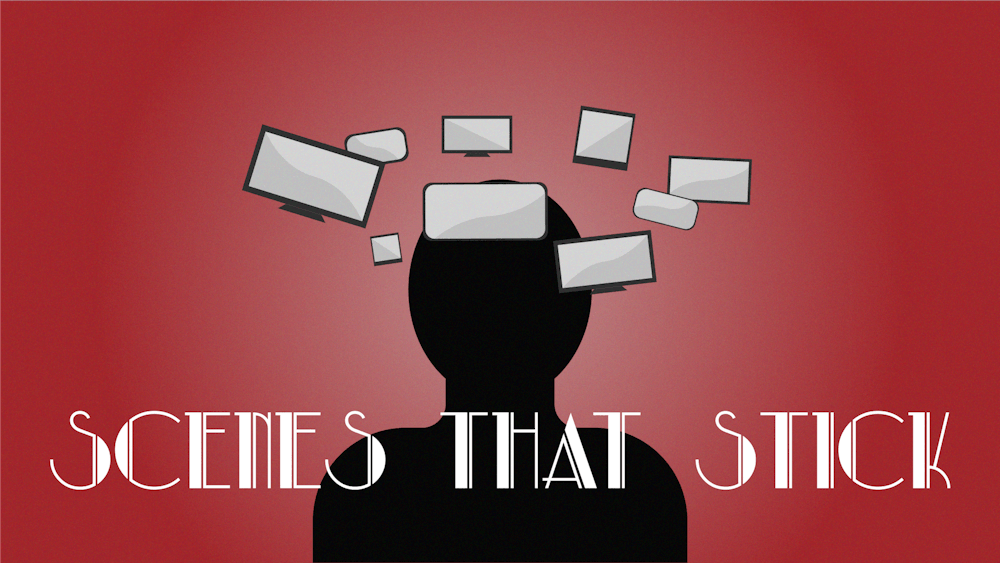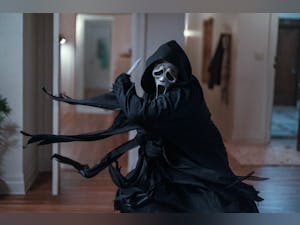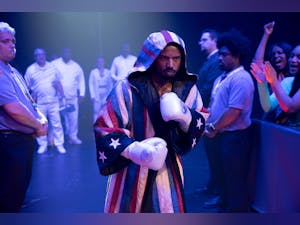From: Silver Screen
Scenes that Stick: Reconnecting with the past in ‘Paris, Texas’

Deeply rooted in the American mythos, Wim Wenders’ 1984 film “Paris, Texas” is a gripping drama about a man seemingly pulled out of thin air. The only thing he can remember from the past four years is a mysterious plot of land and a name: Paris, Texas.
Travis (Harry Dean Stanton) is picked out of the desert in a fugue state by his brother Walt (Dean Stockwell), who takes him back to Los Angeles where Walt and his wife Anne (Aurore Clément) have taken custody of Travis’ son, Hunter (Hunter Carson). In order to reignite Travis’ memory, the family watches an old home video of a day at the beach. Here, the mystery of Travis starts to unravel. He was happily married to a woman named Jane (Nastassja Kinski), but after watching this video, we can’t help but wonder what happened. They were clearly in love; they had a child together and even bought a property together in Paris, Texas. What could have caused Travis to walk out on that?
From the very first shot of the Southwestern landscape, Wenders demonstrates the supernatural nature of the West, a landscape that is a vast and open space, full of wonder and opportunity. The camera lingers on the mundane and ordinary, giving even the plainest objects the reverence they deserve. Now obsolete phone booths, a staple of 1980’s America, become a lifeline of communication in the unknown. Roadside motels and diners are deified by the camera, providing the basis needed for a continuing journey. This creates a strong sense of nostalgia for a rapidly disappearing time in American history, a time before cell phones and constant connectivity.
Together Hunter and Travis embark on a beautifully shot odyssey through the Southwest to reunite with Jane, who is later found working at a gentlemen's club. The club is hallmarked by private booths with a one-way mirror separating the client from the performer. These rooms are reminiscent of confessional booths common in old churches. The one-way mirror only allows one person to view the other, but when Travis enters the booth, he turns his chair to face away from Jane, so neither of the two can see each other. The two communicate through telephone handsets, reminding us of the wall that divides the booth in two.
In this pseudo-confessional booth, Travis tells a story to Jane, a story of a man madly in love with a young woman, a love that slowly devolved into jealousy, distrust and manipulation. The rose-tinted glasses we had previously viewed their relationship with are yanked off as Travis monologs why he walked out on her. The camera barely moves from its position, and the infrequent cuts center the attention on Travis and Jane. Reflections from the mirror blend two faces into one, visually overcoming the separation between them. While the scene might seem dully shot compared to the rest of the film, the simplicity is actually its biggest strength.
The first two-thirds of the film fully embrace the mythical status of the West. Each shot reinforces the notion of the West as a land of opportunity; a place where time stands still and life is a dream. The entire premise of the story rests on a man magically reappearing in the middle of nowhere and embarking on a mythological odyssey to reunite with his wife. Even the title “Paris, Texas” evokes ideas of a spectacular city on the same level as the French capital sitting in the middle of Texas.
But reality isn’t that magical — the man who reappeared in the desert has to reckon with his past failures and reconnect with the life he once lived. The West provides a land full of opportunity that can be squandered in one fell swoop. Paris, Texas isn’t some grand city, it’s a relatively small town complete with its very own scaled-down replica of the Eiffel Tower. The simplistic and almost boring climactic scene grounds the film firmly in reality against the idealistic nature of its beginning. It forces us to focus not on the surroundings, but on the characters and their flaws.
When watching “Paris, Texas,” it’s easy to feel nostalgic — not only for childhood, when life was easy and everything was an adventure, but for a simpler time without the stresses of modern life, a time the majority of us will never get to live in.
The days of getting in a car and just driving out into the unknown, with no clear destination in mind, are harder to come by. Completely disregarding work, school or life in general to go on an adventure can be appealing, and yet out of reach for many of us. But in those few moments where the advent of walking away looks appealing, think back to Travis and Jane, and remember that what we leave behind is never really gone.
“Paris, Texas” is available to stream on HBO Max now.




